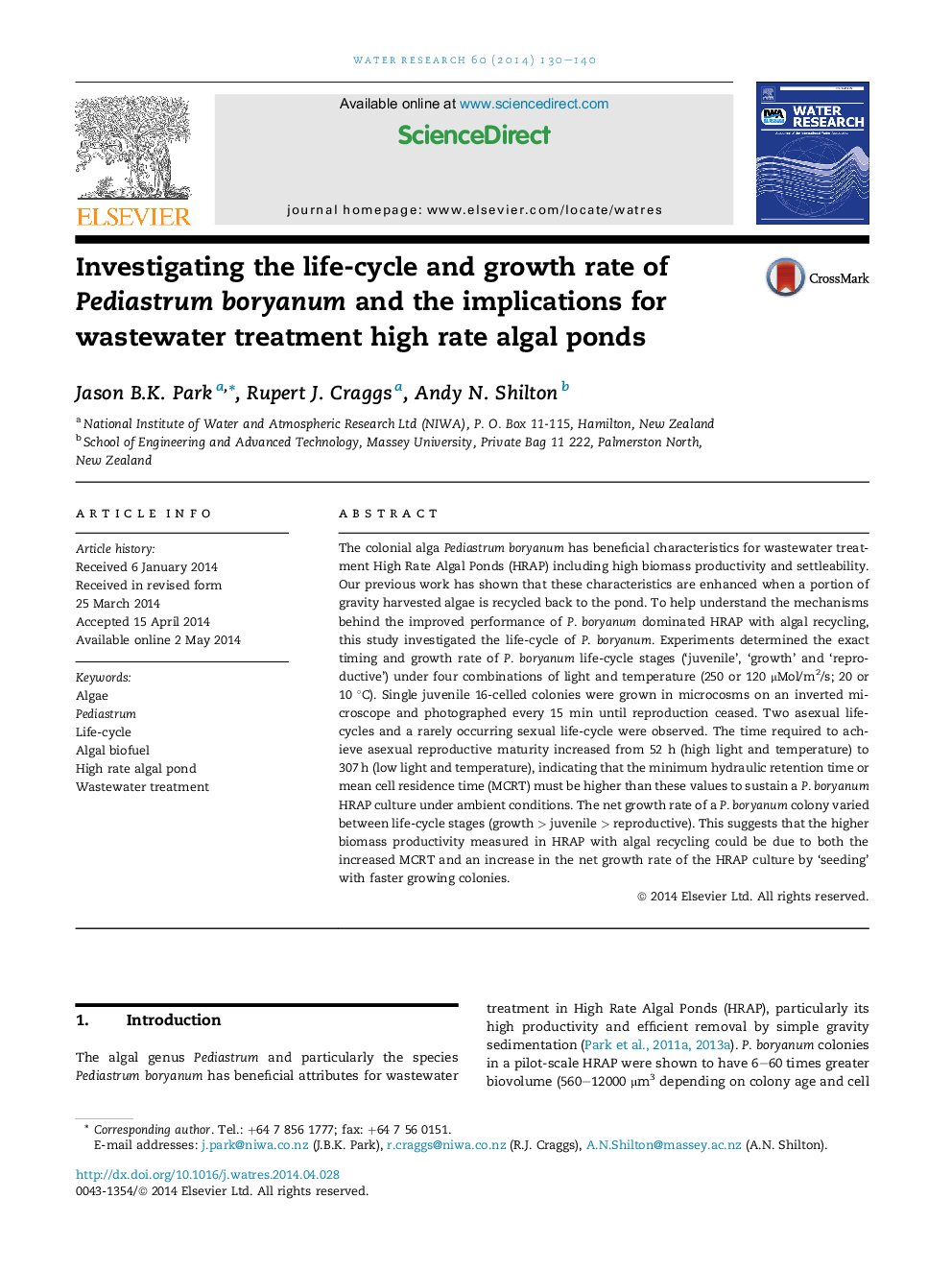| کد مقاله | کد نشریه | سال انتشار | مقاله انگلیسی | نسخه تمام متن |
|---|---|---|---|---|
| 4481503 | 1623108 | 2014 | 11 صفحه PDF | دانلود رایگان |

• The complete life-cycle of Pediastrum boryanum was observed for the first time.
• The net growth rate of P. boryanum colony varied during the life-cycle stage.
• ‘Growth’ stage colony had the fastest net growth rate.
• Algal recycling improves biomass production in wastewater treatment HRAP.
The colonial alga Pediastrum boryanum has beneficial characteristics for wastewater treatment High Rate Algal Ponds (HRAP) including high biomass productivity and settleability. Our previous work has shown that these characteristics are enhanced when a portion of gravity harvested algae is recycled back to the pond. To help understand the mechanisms behind the improved performance of P. boryanum dominated HRAP with algal recycling, this study investigated the life-cycle of P. boryanum. Experiments determined the exact timing and growth rate of P. boryanum life-cycle stages (‘juvenile’, ‘growth’ and ‘reproductive’) under four combinations of light and temperature (250 or 120 μMol/m2/s; 20 or 10 °C). Single juvenile 16-celled colonies were grown in microcosms on an inverted microscope and photographed every 15 min until reproduction ceased. Two asexual life-cycles and a rarely occurring sexual life-cycle were observed. The time required to achieve asexual reproductive maturity increased from 52 h (high light and temperature) to 307 h (low light and temperature), indicating that the minimum hydraulic retention time or mean cell residence time (MCRT) must be higher than these values to sustain a P. boryanum HRAP culture under ambient conditions. The net growth rate of a P. boryanum colony varied between life-cycle stages (growth > juvenile > reproductive). This suggests that the higher biomass productivity measured in HRAP with algal recycling could be due to both the increased MCRT and an increase in the net growth rate of the HRAP culture by ‘seeding’ with faster growing colonies.
Figure optionsDownload high-quality image (199 K)Download as PowerPoint slide
Journal: Water Research - Volume 60, 1 September 2014, Pages 130–140